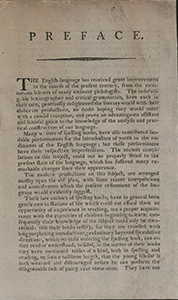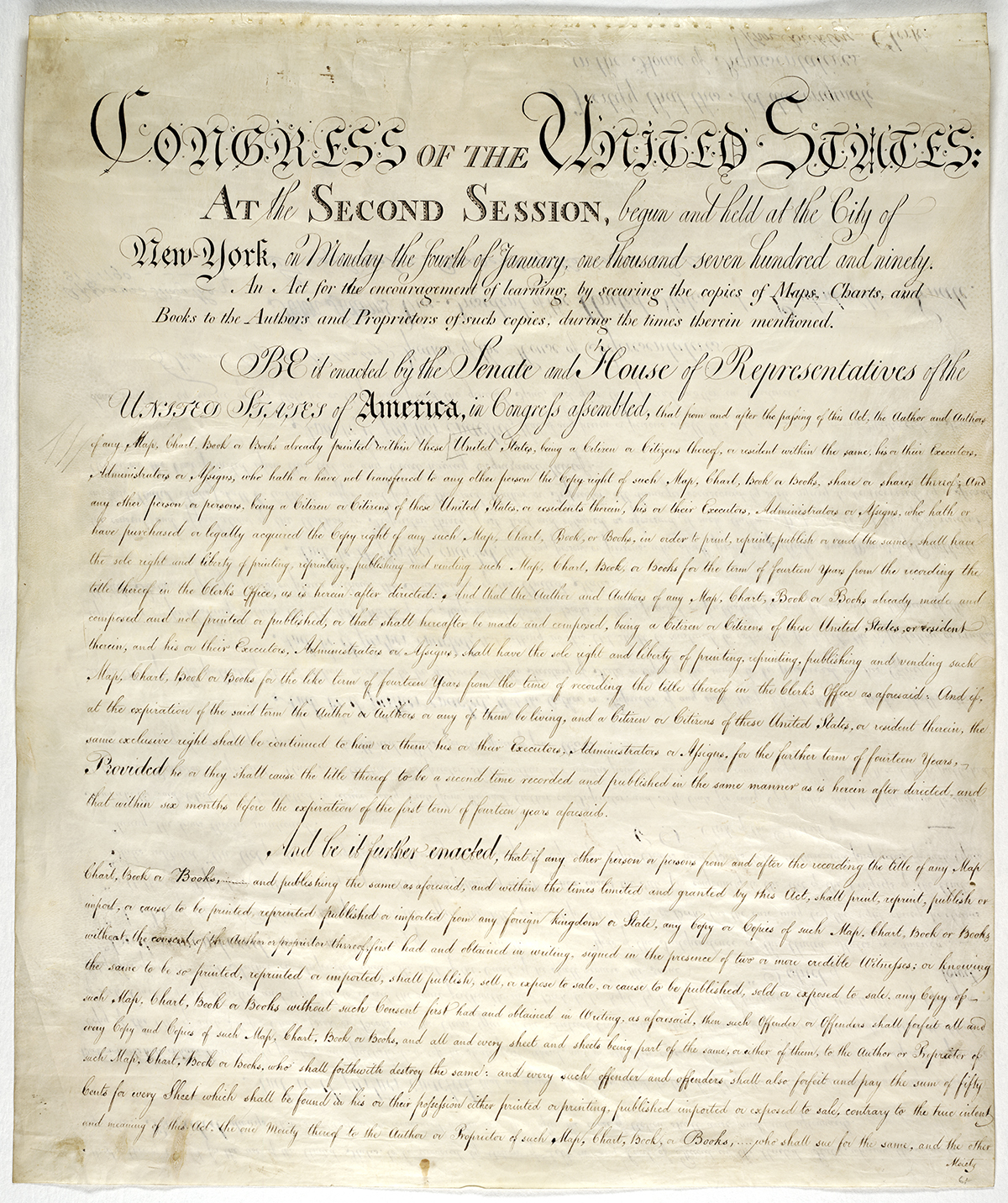The 18th Century
Highlight: Congress Passes First Copyright Act
On May 31, 1790, the first copyright law is enacted under the new United States Constitution. Modeled off Britain’s Statute of Anne, the new law is relatively limited in scope, protecting books, maps, and charts for only fourteen years with a renewal period of another fourteen years. There was no Library of Congress or Copyright Office at the time, so works had to be registered in the U.S. District Court where the author or proprietor lived.
Congress amended the Copyright Act of 1790 many times over the next century. These amendments greatly changed what works were covered under copyright, for how long, and how to register a work. Important changes included
- extending the initial period of protection from fourteen years to twenty-eight years (1831);
- expanding copyrightable works; through amendment, Congress added the following categories to protectable works:
- “historical and other prints” (1802),
- dramatic works (1856),
- photographs (1865), and
- visual art (1870);
- expanding the exclusive rights of authors to include:
- the right of public performance for dramatic works (1856) and musical compositions (1897) and
- the right to create derivative works (1870);
- changing the process for gaining copyright protection by
- requiring copyright owners include a prescribed notice on every copy distributed to the public (1802),
- requiring recordation of copyright assignments (1834), and
- relocating and centralizing all copyright activities from the U.S. District Courts to the Library of Congress (1870) and further into the Copyright Office (1897);
- establishing copyright relations with foreign countries (1891);
- prohibiting copyright protection in United States government publications (1895).
-
International Copyright
-
Copyright Firsts
-
Statute of Anne Takes Effect
April 10, 1710

Named after Anne, queen of Great Britain, the statute becomes the foundation for British and American copyright law.
-
Connecticut Passes First State Copyright Law
January 8, 1783
Connecticut passes the first U.S. copyright statute. Noted lexicographer Noah Webster is instrumental in securing its enactment. All other U.S. states except for Delaware follow suit.
-
Provision for Federal Copyright Submitted to Framers
August 18, 1787
James Madison submits a provision to the framers of the U.S. Constitution to "secure to literary authors their copyrights for a limited time."
-
U.S. Constitution Is Ratified
June 21, 1788
Article I, Section 8, of the U.S. Constitution gives Congress the power to “Promote the Progress of Science and useful Arts, by securing for limited Times to Authors and Inventors the exclusive Right to their respective Writings and Discoveries."
-
Philadelphia Spelling Book Is Registered
June 9, 1790

The first copyright entry, The Philadelphia Spelling Book by John Barry, is registered in the U.S. District Court of Pennsylvania. Protection is for fourteen years with a renewal period of another fourteen years.
-
John Churchman’s Magnetic Atlas and Variation Chart Is Registered
June 17, 1790
John Churchman’s Magnetic Atlas and Variation Chart is the first chart registered under the Copyright Act of 1790.
